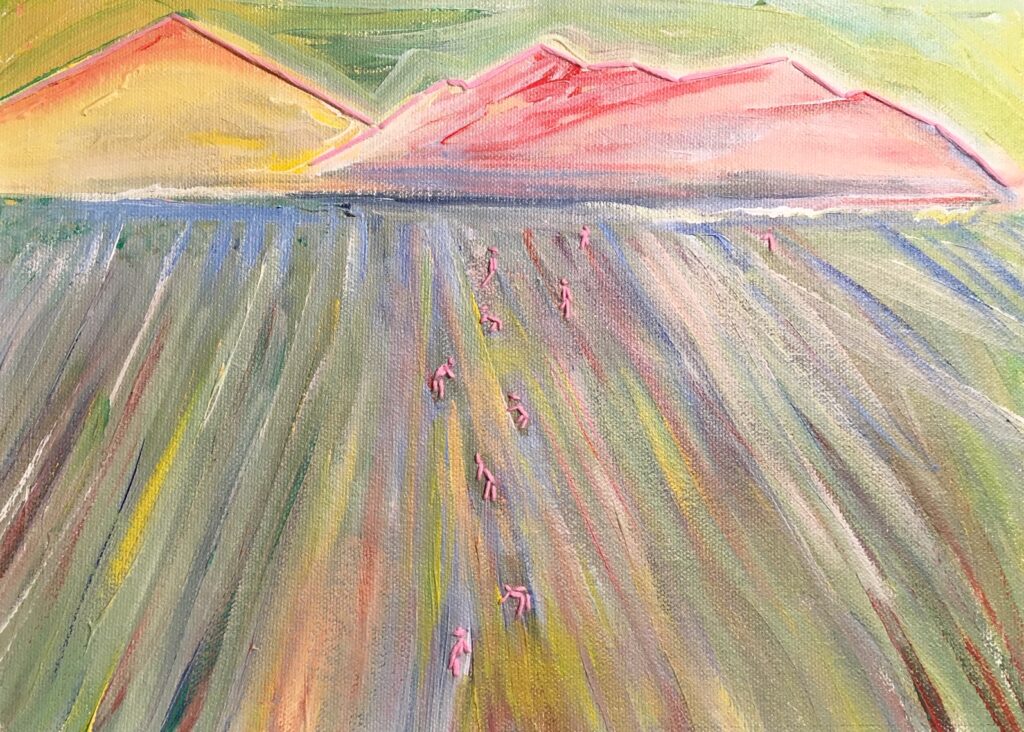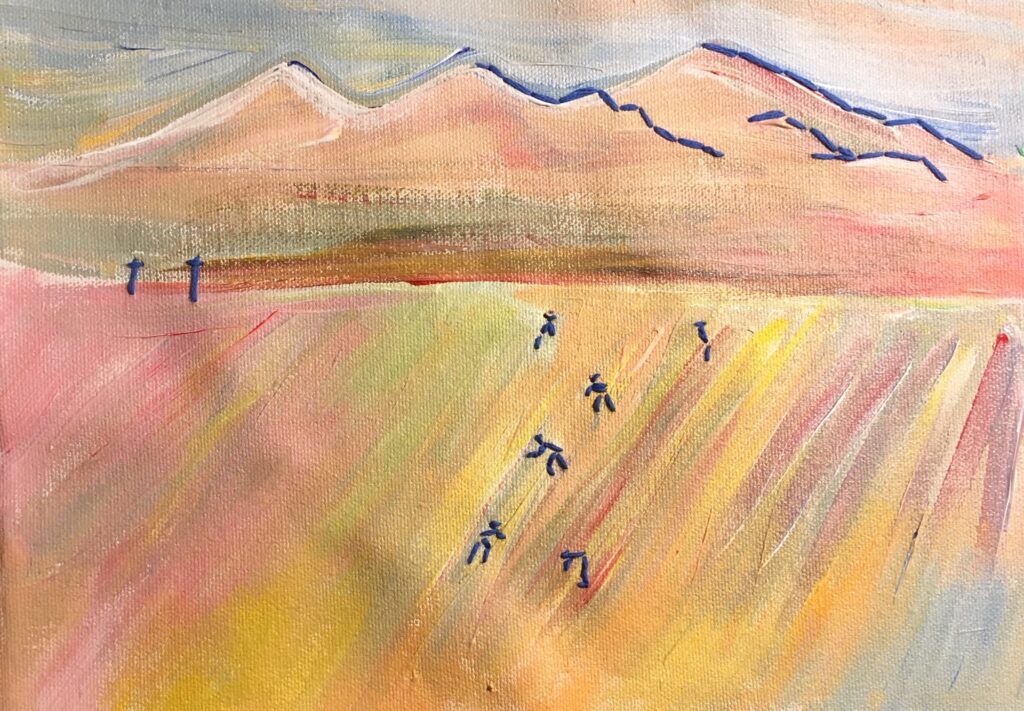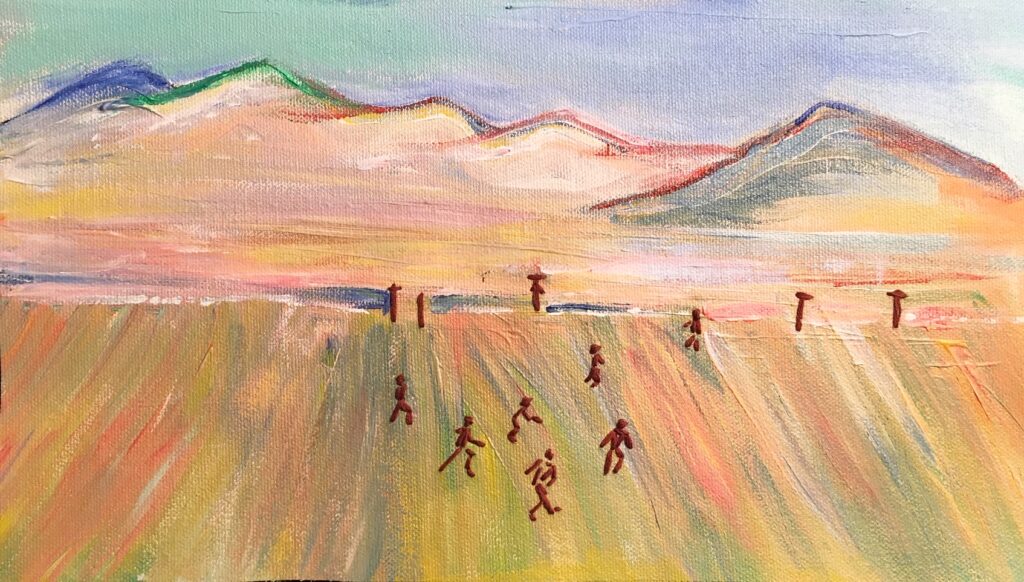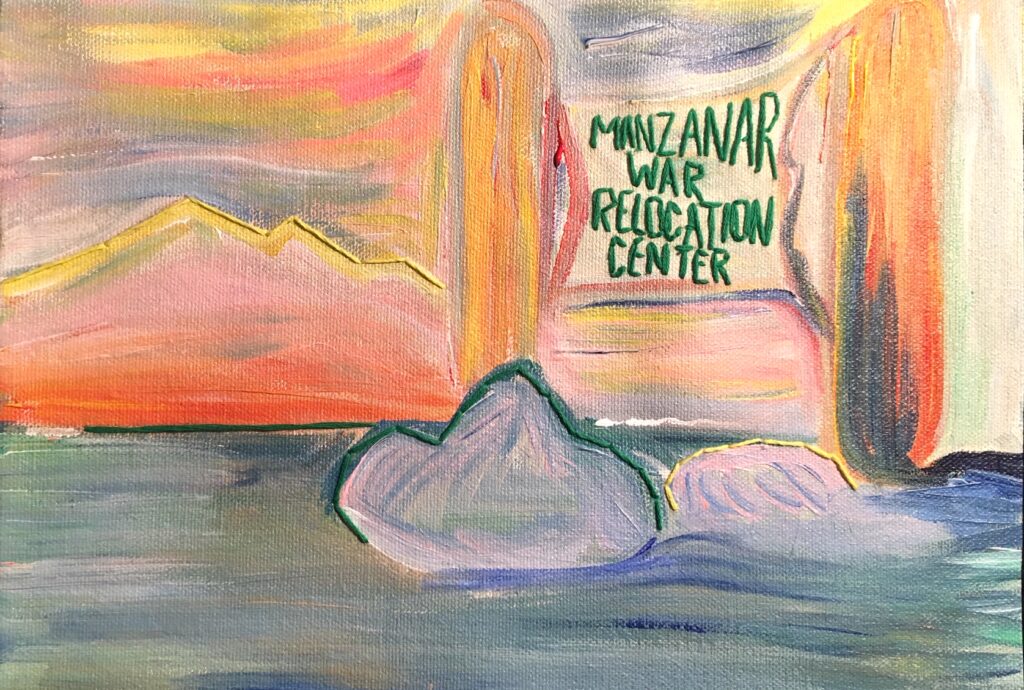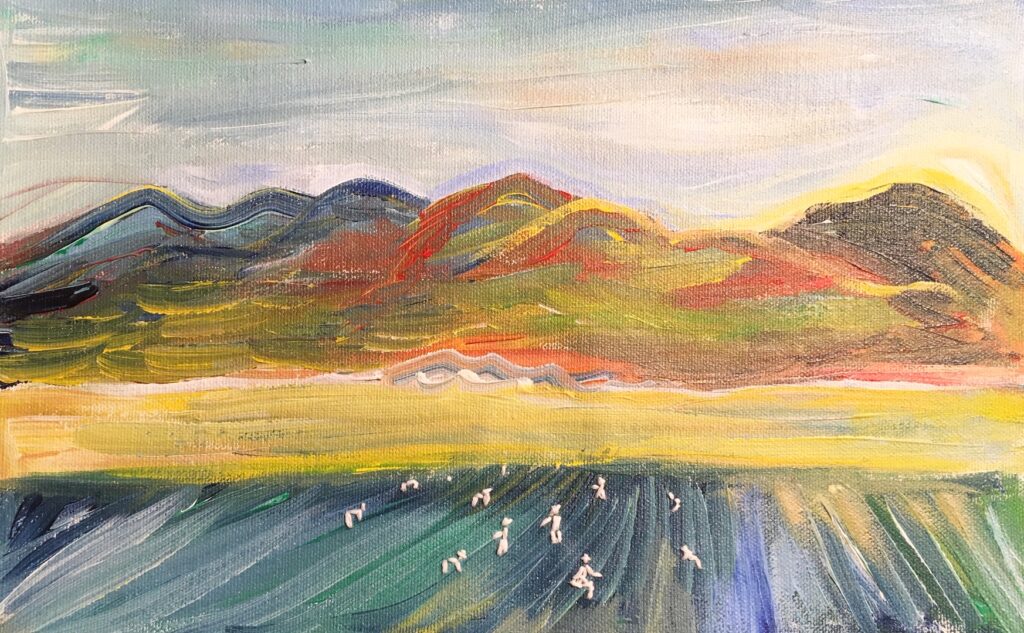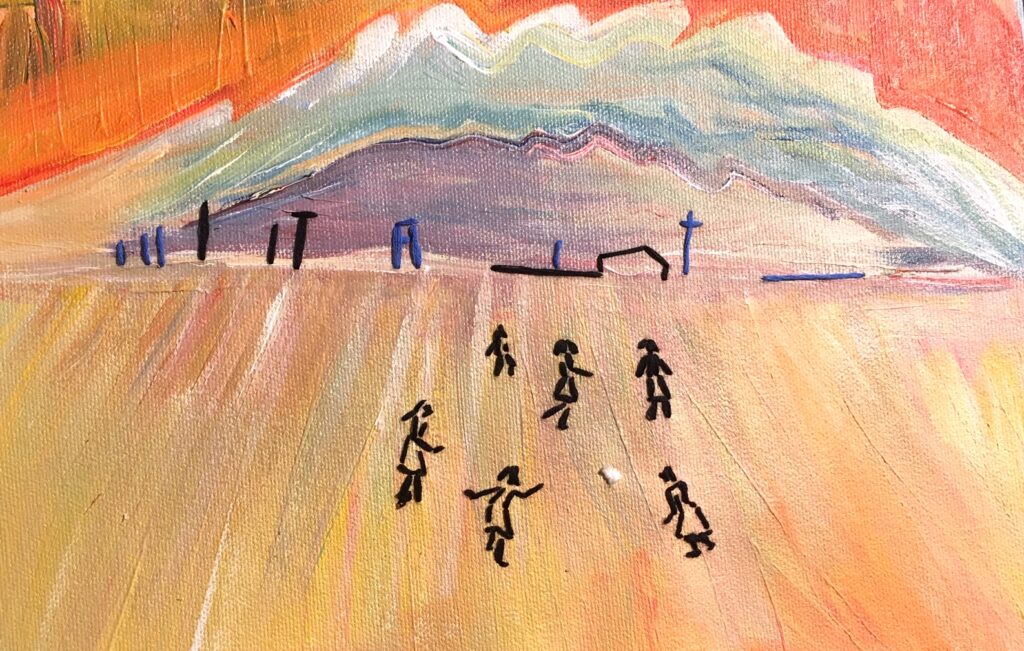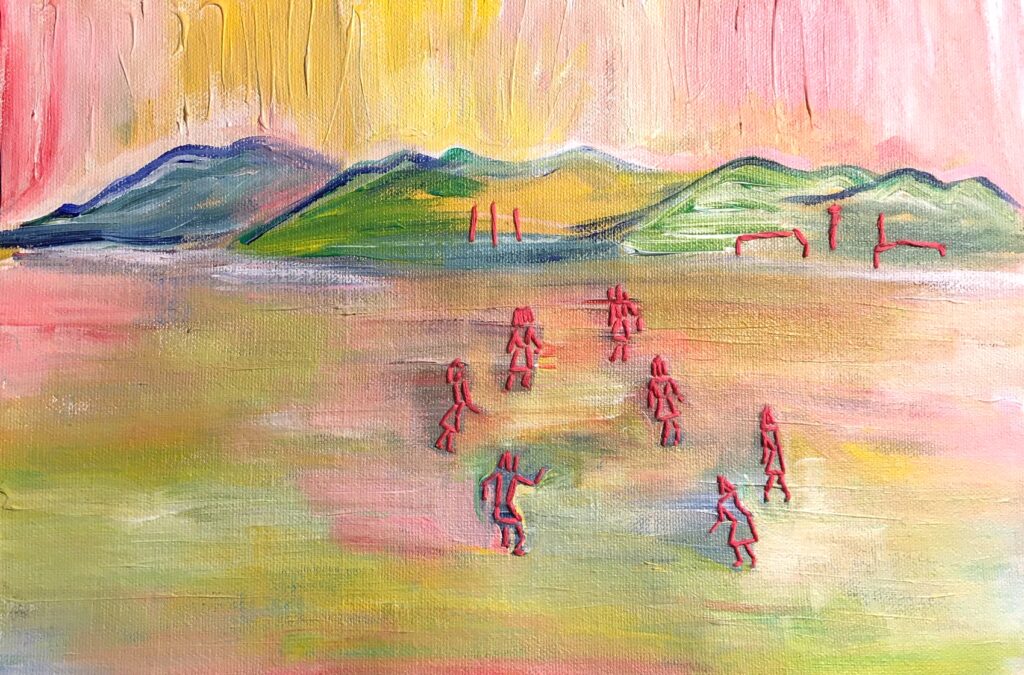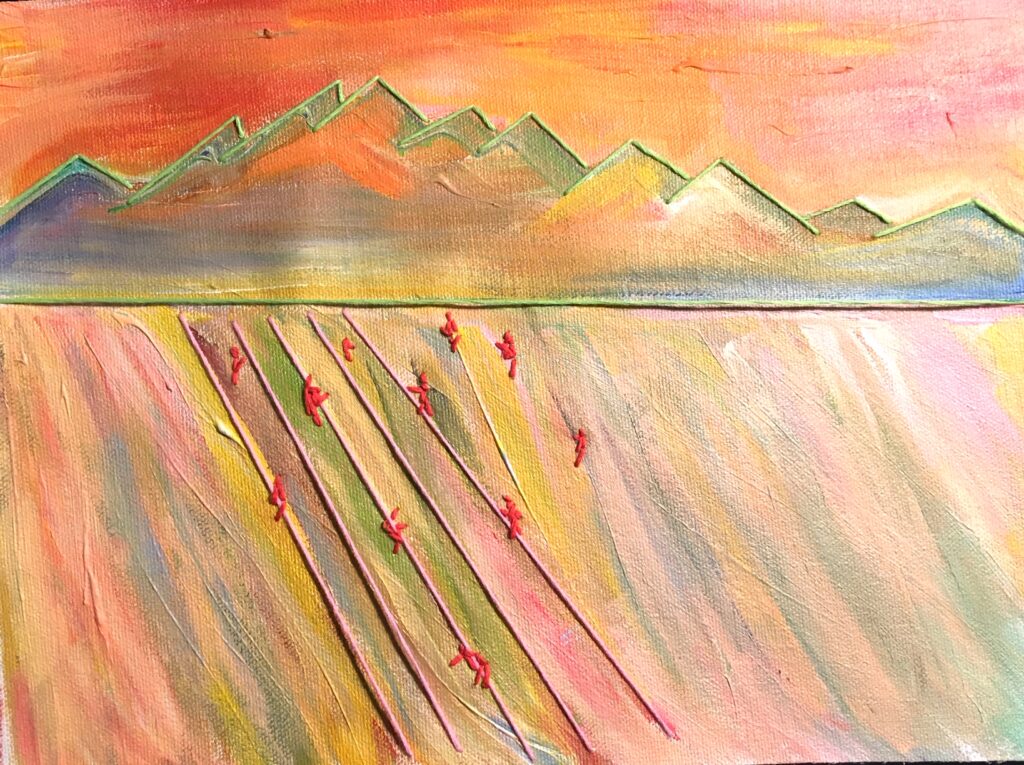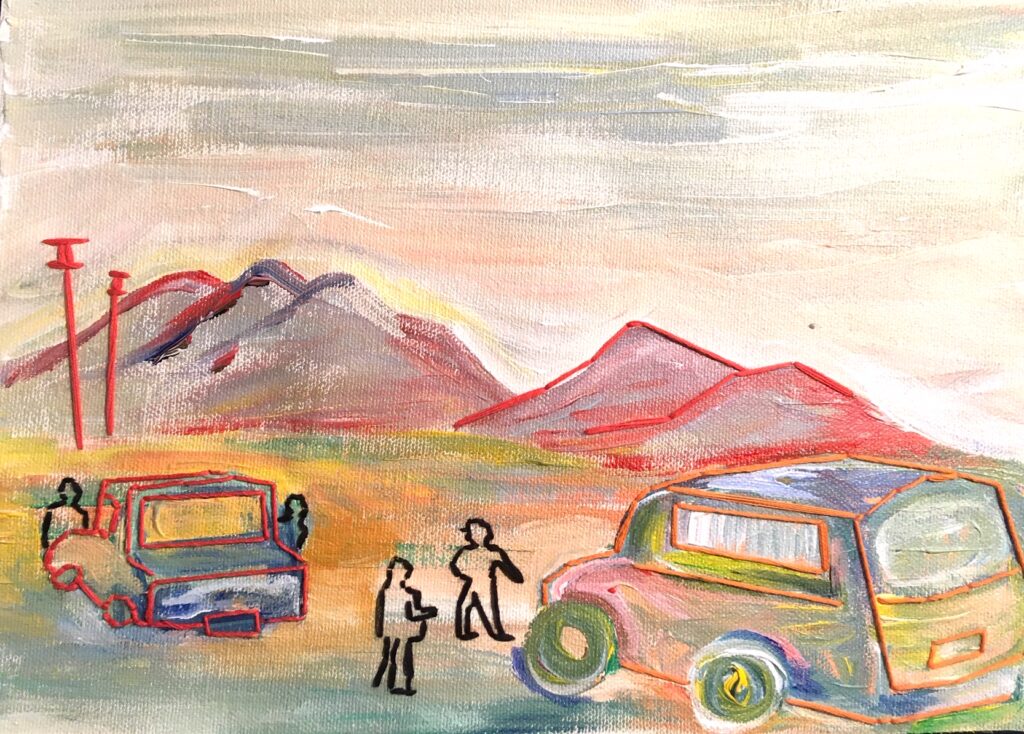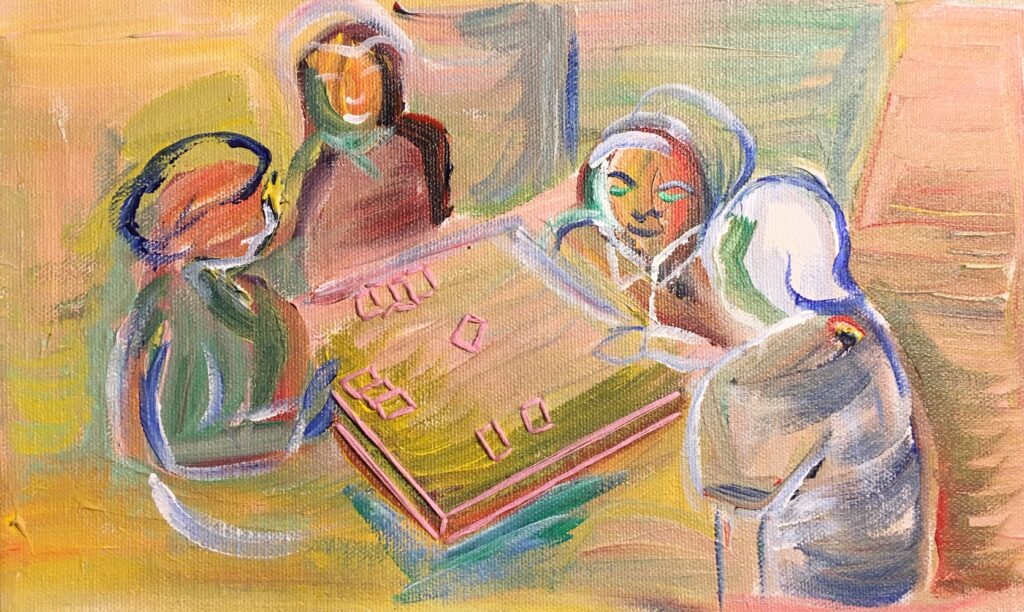

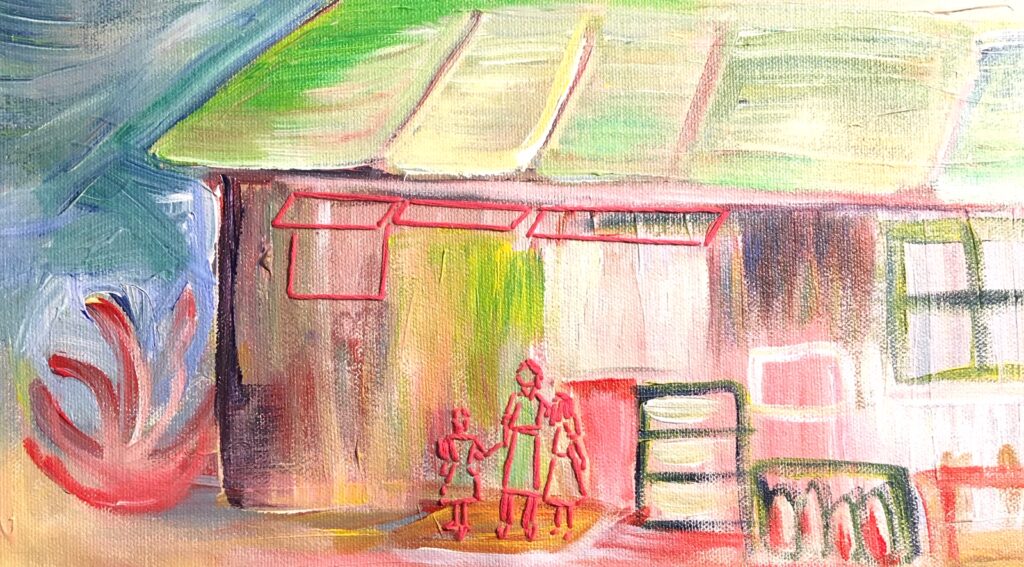
In 1942, the US government forced more than 110,000 Japanese Americans to leave their homes and live in military-style camps. The interment that uprooted families and tore apart communities was the result of racism, under the mask of supposed security threats, none which were ever proven. Forced migration is not a new concept in US history. More than 100 years prior, the Indian Removal Policy forced over 60,000 Native Americans from their homeland, upon the same land the ten concentration camps are located.
Manzanar, in Southern California, was the first Japanese concentration camp. Memoir “Farewell to Manzanar” (1973) by Jeanne Wakatsuki Houston and Ansel Adams’ photographs of the camp (1943) have brought light of daily life at Manzanar.
In incarceration, life goes on.
In Lifelines, I recreated some of Ansel Adams’ black and white film photographs of Manzanar, now part of the Library of Congress. Many of the photographs show farm work and recreation. The barren landscape is apparent and the endless empty skies isolate the subject, leaving the viewer with a sense of loneliness.
I am inspired by the bold lines and natural palette of artist Henry Fukuhara, a Japanese American artist interned at Manzanar. I am also inspired by fiber works of Mexican artist Victoria Villasana, who used vibrant thread colors to trace signs of life.
The humanity embodied in these stitches highlight the perseverance of all people, clinging to their humanity, in incarceration.
